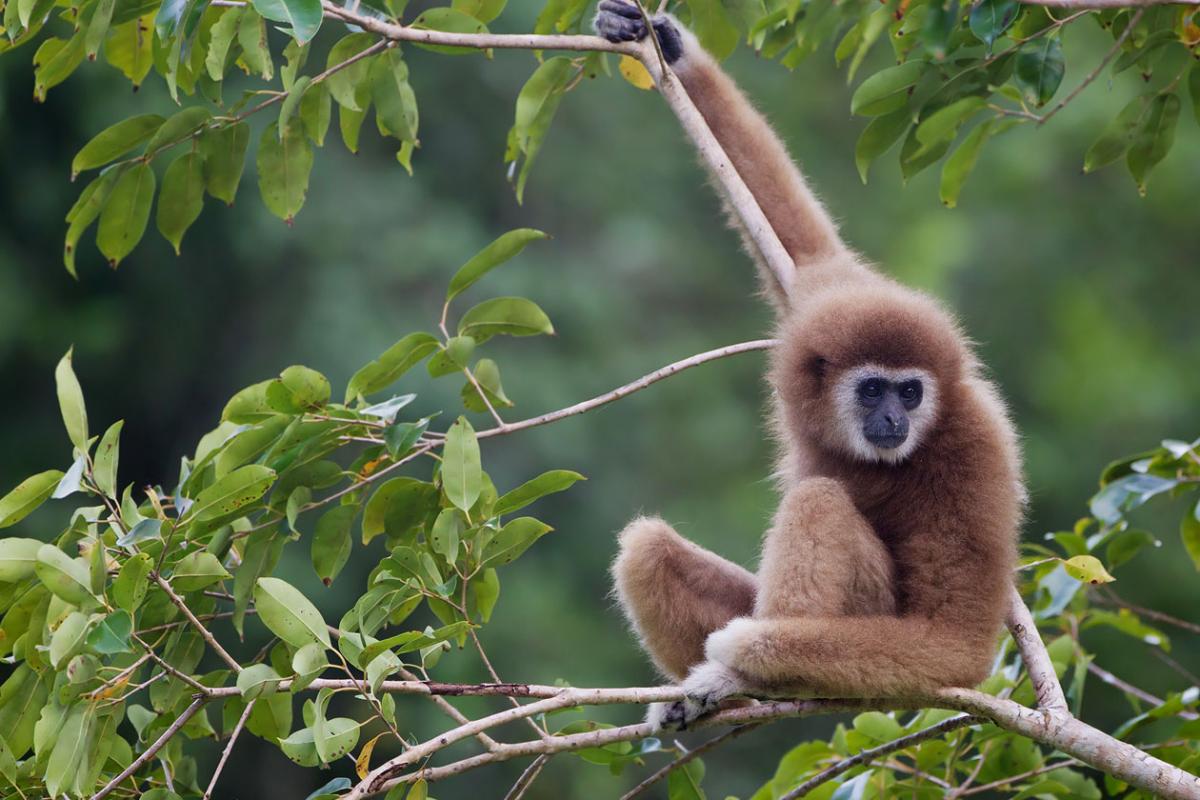D: Let’s explore nature, Yaël! How about we rent a treehouse, do some hiking, and experience the great outdoors?
Y: I’m not so sure about the treehouse idea—I’m scared of heights.
D: Where’s your sense of adventure? As a kid, I loved climbing trees. And I always wished I could swing on vines, like Tarzan.
Y: You’ll like this study, then! A 2014 landslide in China destroyed a 50-foot-wide stretch of forest. The gibbons who live there are arboreal, meaning they reside in the treetops. When the landslide created a treeless gully, the gibbons had to leap dangerously across, or take a long detour through the trees. The solution? Researchers built a rope bridge for the apes!
D: That’s pretty creative. What did the bridge look like?
Y: It’s a simple design: two ropes, one strung slightly above the other.
D: I may not be Tarzan, but I think the bridge makes sense. After all, gibbons could use it in four ways. First, they could walk across, balancing as if they were on a tightrope. Second, they could hang upside down and pull themselves across with hands and feet. Third, they could swing from arm to arm, like kids on the monkey bars. Or fourth, they could walk on one rope and use the other as a handrail.
Y: You know your gibbon facts, Don! Mostly, the apes hung upside down, or walked with one rope as a handrail. Although, it did take them almost 6 months to use the bridge at all!
D: New things can be scary. But forest fragmentation is scarier: when landslides or roads divide the forest, endangered species, such as gibbons, find it hard to safely travel their territory.










